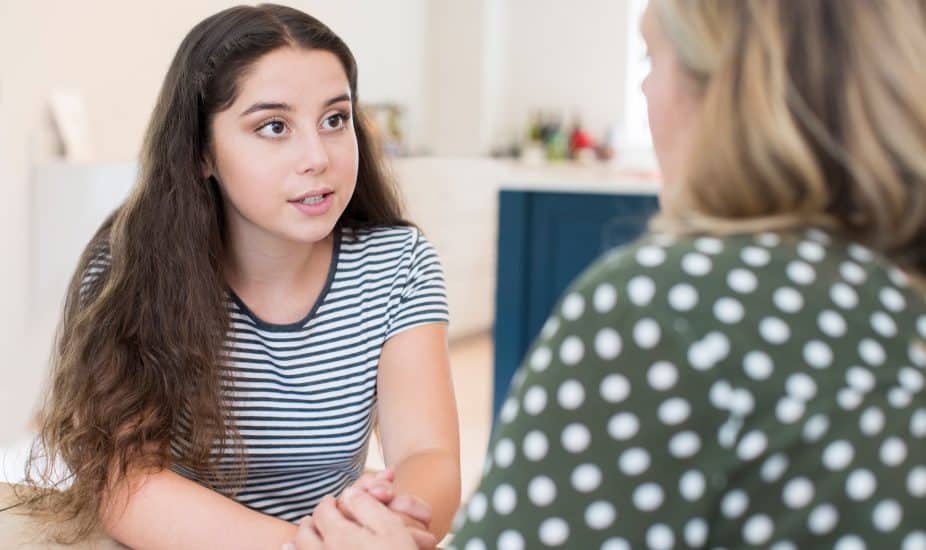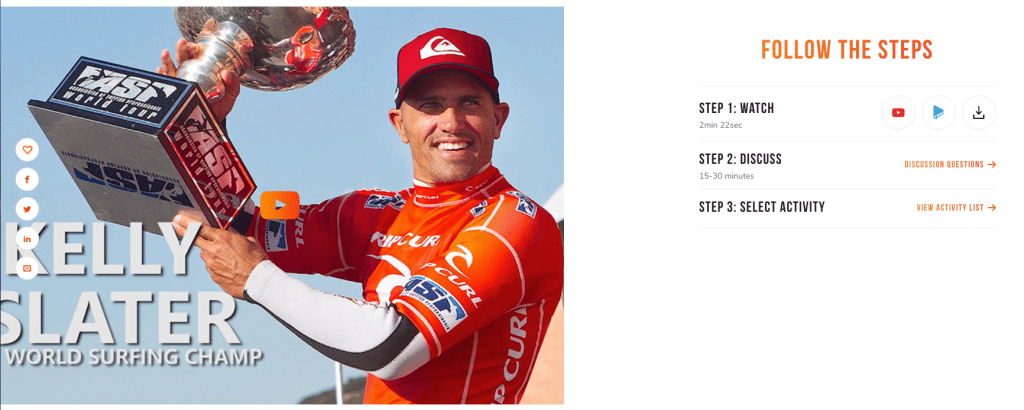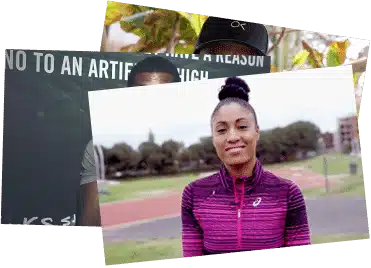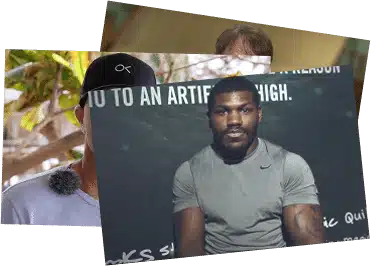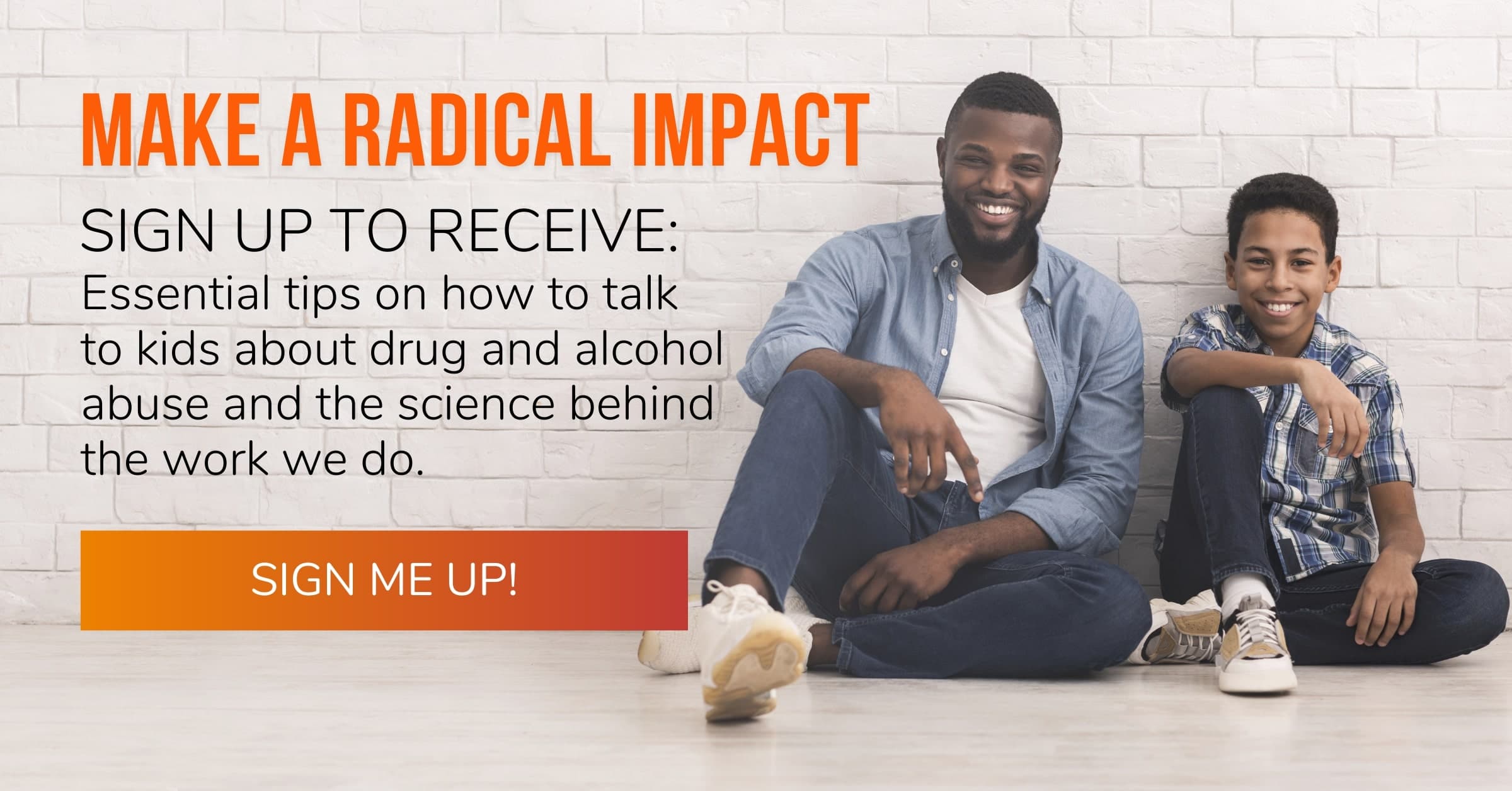HOW TO TALK TO TEENS ABOUT DRUGS AND ALCOHOL – WE’VE CURATED THE 8 MUST-HAVE CONVERSATIONS.
- DRUGS AND ALCOHOL ARE REAL AND DANGEROUS
- YOU’RE NOT THAT SMART, YET
- LET’S TALK ABOUT WHO YOUR FRIENDS ARE
- LET’S FIND YOUR NATURAL HIGH
- FAMILY HISTORY
- LET’S TALK ABOUT ANXIETY AND STRESS
- I WILL LOVE YOU NO MATTER WHAT – YOU CAN TALK TO ME
- LET’S IMAGINE YOUR FUTURE
THERE’S NO QUESTION THAT YOUR KIDS WILL BE EXPOSED TO AND LEARN ABOUT DRUGS AND ALCOHOL – THERE’S NO ESCAPE IN THIS LIFE.
They will learn from television shows, movies, social media, and their friends. And almost everything they learn will be unhelpful and misleading at best – dangerous at worst.
Our expertise is in equipping adults – teachers and parents – with the tools they need to have the most helpful, thoughtful, and relevant conversations with kids about substances.
Our core mission is to help every kid have every opportunity to build a thriving life, and one of the biggest threats to that kind of life is the dangers of substance abuse. So, here are eight conversations you should have with your kids as they go through childhood into adulthood. Use this guide to frame your conversations with them.
As awkward as the conversations might be, the consistency and honesty with which you approach these discussions will make a big difference for them.
Here are a few tips before you start each conversation:
- Be cool about it. Be casual – don’t talk like Charlie Brown’s parents did.
- Be honest, open, and authentic – kids can smell inauthenticity a mile away.
- These aren’t one-time chats; consider putting these into your calendar as reminders every year.
(#1) THE ‘DRUGS AND ALCOHOL ARE REAL AND DANGEROUS’ CONVERSATION
You probably know this implicitly, but here are a couple of facts and figures that might put a little emphasis on how bad it is.
For adults who struggle with life-destroying addictions, 90% of them got started when they were kids.[1]
That could even look like a kid taking an extra Ibuprofen or Benadryl to see what happens. So, it’s really important that you educate your kids about how harmful substances can be.
In fact, research has shown that teens who consistently learn about the risks of drugs from their parents are up to 50% less likely to use drugs than those who don’t.[2]
Here are some of the most important and significant facts to share with your kids:
- More teens died from Heroin and other illicit opioids than alcohol, Benzodiazepines (e.g. sedatives), and Common Prescription Opioids (pain relievers)3 combined in 2019.3
- Youth who start drinking before age 15 are 7 times more likely to develop alcohol use disorders as adults than those who wait until after age 18.[4]
- 70% of high school seniors don’t think they risk harming themselves (physically or in other ways) if they smoke marijuana regularly. [5]
- Risky substance use and addiction is the leading cause of preventable death in the United States, and in most cases, it begins in the teen years.[6]
- Drug-related deaths among 18 to 34-year-olds have soared 400% in 20 years.[7]
Here are some triggers to remind you to have the conversation:
- When you’re watching a movie as a family together and someone on screen is using a substance
- When you come across someone who is acting inebriated or under the influence – help them interpret why that person is acting strange
- When you drink alcohol or smoke around them
- When you spend time with friends or a family member who drinks or smokes
(#2) THE ‘YOU’RE NOT THAT SMART, YET’ CONVERSATION
But no offense – it’s your brain development.
It’s important for you to realize, and for your kids to know, that they aren’t capable (yet) of making wise and informed decisions for themselves. Because of the massive reconstruction of their brains during adolescence, they lack the executive functioning skills to think reflectively about their values, their future state, or consequences.
Additionally, the adolescent brain has a particularly unique thirst for the hormone called dopamine. Dopamine gets released at an extra level during the teenage years when they engage in risky behaviors like driving, action sports, substance use, or generally anything parents cringe at.
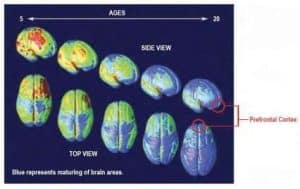
The prefrontal cortex is the part of the human brain where rational and logical thinking occurs. In adolescents, it’s not developed yet.
Neuroscience has learned that it’s not fully developed until around twenty-five years old.[8]
That means teenagers lack the capacity to make informed choices for themselves and others that reflect common sense or logic. They can’t yet process through their personal values, either, and are driven more by emotion and by a desire for chemical highs that come from taking risks.
What does this imply for parents and educators?
It means we need to be their prefrontal cortex for a while longer. We need to help them make smart and healthy choices.
When they lack the capacity to do so, we need to make those choices for them, when appropriate.
This goes against the ‘cool parent’ philosophy of providing substances for teenagers to consume as long as there is adult supervision. Kids are uniquely susceptible to addiction compared to adults, and the potential damage to their development and health is real.
In other words, don’t provide substances or turn a blind eye.
You need to be their thinking brain and help them make the best choices that give them the best opportunity to thrive in life. Sure, you might not be thought of as cool, but it’s worth the cost.
(#3) THE ‘LET’S TALK ABOUT WHO YOUR FRIENDS ARE’ CONVERSATION
Remember those After School Specials back in the day? They were a series of films produced by ABC for kids with dramatic storylines of teens in serious trouble matched with terrible acting and huge plot holes. That was probably the lesson you got about peer pressure – or at least that’s where I learned about it.
Picture a few of the ‘rough kids’ in school circling around another kid at the lockers after school and putting drugs into the kid’s hand and mocking and deriding him until he takes it.
But it turns out, that’s not really how peer pressure works.
The real danger of peer pressure is an internal thing happening inside the kid. It’s their desire for acceptance that drives them. When peers are present, or can observe their behavior, it kicks the reward center of their brain into overdrive.
The values, priorities, and perspectives your kid will adopt as a teenager will be way more influenced by their peers than by their parents. We know that implicitly, but it’s an important idea to remember as they grow up.
That’s why it’s so important to be involved in their friendships – at the very least to know their friends on a personal level.
The older they get, the less likely it will be that you can get to know their friends’ parents, but it’s still possible if you make an effort.
You might even consider being intentional about creating opportunities for their friends to spend time at your house so you can get to know them.
BUT HERE’S THE MOST IMPORTANT PART OF THIS IDEA – THAT YOU LOOK FOR OPPORTUNITIES TO TALK WITH YOUR KIDS ABOUT THEIR FRIENDS.
- Ask them curious, open-ended questions about their friends.
- Ask them what they like about them.
- Ask them what they like to do with them.
- And when they go through some relational conflict, be a sounding board without giving too much prescriptive advice.
- Share with them your experiences of building friendships with people of good character and intent.
- Make it normal to talk with your kids about their friends.
(#4) THE ‘LET’S FIND YOUR NATURAL HIGH’ CONVERSATION
In the top five most annoying things kids say to their parents has to be this: “I’m bored.”
When I was a kid, if I happened to utter this in front of my grandma, she would snap back: “Only boring, uninteresting people get bored. Get over it and find something to do.” Although her approach lacked a little tact, she had a point.
Kids today have more entertainment options than ever before (a fact every dad on a road trip likes to bring up at least once a day.) It’s also the sign of healthy self-awareness, self-management, and emotional regulation to be able to entertain yourself.
Boredom, however, is a problem.
Kids who are engaged, connected, involved, and busy have fewer opportunities to engage in risky behaviors.
It’s important to take a look at how boredom impacts our kids.
The opposite of boredom isn’t entertainment, it’s engagement.
Engagement is dynamic, interesting, and makes time fly. Engagement happens when we’re curious and when we experience some cognitive dissonance.
Think of an engaging lecture you’ve listened to or an engaging conversation. You definitely know the opposite – you know the meeting that seems to last forever or the presentation that makes you angry for how irrelevant it is.
That’s why this is so important for parents and educators to understand. We need to learn how to engage kids by challenging them, provoking their curiosity, and giving them the space to explore what bugs them.
We think this is as important of a time as we’ve ever faced to be intentional about helping kids reflect on their natural highs. Read more on helping kids find their ‘natural highs’ here.
To help them chase their own curiosity, provide opportunities for them to learn what they want to learn, to build or fix things with their hands, to try new activities, or to cultivate an interest in the arts or an outdoor activity.
So the next time you notice your kid acting or feeling bored, jump in the car and ask them where they want to go and what they want to do.
(#5) THE ‘FAMILY HISTORY’ CONVERSATION
It’s really important that our kids have an appropriate sense of where they come from; who they come from. Most families have a tendency to shield their children from the faults of their family members – whether it’s an uncle’s jail record, a grandmother’s drinking problem, or a family’s mental health history.
Watch Pro-Surf Champion and Natural High Storyteller Kelly Slater share his story about his family’s history of addiction.
Of course, that’s normal – parents want to protect their kids, paint their family in a positive light, and give their kids a strong foundation.
But the problem is, issues like addiction leak down through the generations, and if our kids aren’t aware of the issues they’re being exposed to and predisposed to, they will be less likely to face their challenges effectively.
So, it’s important for parents to share openly with their kids. Of course, you need to gauge the most appropriate age and maturity level regarding these sensitive topics. They might ask questions. It’s helpful not to shut them down. They might be exposed to something at a family gathering that deserves an interpretation.
The worst thing we can do is to pretend like nothing is wrong – they’ll just be confused and, at worst, learn to distrust their own gut and intuition. You might just decide to share.
When they reach certain age thresholds like becoming a pre-teen and then a teenager, the more they’re aware of the dangers the better prepared they will be.
(#6) THE ‘LET’S TALK ABOUT ANXIETY AND STRESS’ CONVERSATION
It’s stressful to be a human. We all experience a lot of stress and anxiety from many angles: health concerns, racial injustice, economic uncertainty, and family.
Our kids feel it, too, even if they’re less aware of what’s going on out in the world. They also feel our stress and often carry it inside themselves without even realizing it.
Stress and anxiety aren’t always negative. Psychologically speaking, they’re neutral. In fact, stress and anxiety are often the beginning of personal growth. It’s all about how we frame it.
What if we as parents and educators took opportunities to help our kids interpret the stress and anxiety they feel differently?
Resilience is a quality that strong people have. It’s an attribute that is shaped through experience and reflection. You have to earn it. We would say that someone demonstrates resilience when they face setbacks and adversity (stress and anxiety) and yet prevail.
SO WHAT CAN WE DO TO HELP OUR KIDS REINTERPRET THEIR STRESS AND ANXIETY?
We can have conversations where we affirm our kids and let them know how they’re demonstrating resilience and grit by choosing to stay engaged in their learning, by making healthy choices for themselves, and by reaching out to stay connected with friends.
We can be intentional about offering reflective opportunities for them to notice their own evidence of resilience. Ask them at the dinner table or during your next car ride: What’s something you’ve done today that was difficult, challenging, or stressful? Let them think for themselves to help them grow in self-awareness and discover their own inner capacity to face hard things.
Stress and anxiety can prompt us all either towards self-destruction and self-pity or towards strength and endurance.
The question is how we will frame and interpret what we’re going through.
(#7) THE ‘I WILL LOVE YOU NO MATTER WHAT – YOU CAN ALWAYS TALK TO ME’ CONVERSATION
Even if I’m scared, angry, or disappointed. Kids need their parents to be their safest place. The people they can always turn to – no matter what. The people they can trust to be there for them and there with them, without shame, disappointment, or frustration that could crush them.
That’s a really hard line to hold, isn’t it? Our kids can frustrate us, make decisions that disappoint us, and confound our common sense.
On top of that, it’s hard to separate our identity from theirs – it’s easy for our kids to reflect who we are and how we see ourselves.
It’s a conversation that’s easier to have than to embody.
That being said, we still need to have this conversation repeatedly throughout the years of growing up. Our kids need to know they don’t need to be perfect, and it’s ok to make mistakes.
In fact, making mistakes is kind of how the entire process of growing up works.
Kids who feel safe to make mistakes, knowing their core foundational relationships will support them no matter, what will have a greater opportunity to learn from their experiences and make better choices for themselves.
Starting this conversation is actually pretty easy – think of a major mistake you made when you were around their age, even if it involves a mistake you made with substance use. Tell them the whole story, what you did, why you did it, and what you learned.
Not only will your honesty draw them closer to you, but they will also likely be able to learn from your life lessons as well as start to accept the idea that you understand what it means to blow it. Then, when they cross the line, in the back of their mind they’ll know that you will understand what it means to be human.
(#8) THE ‘LET’S IMAGINE YOUR FUTURE’ CONVERSATION
Our kids are our pride and joy. Nothing matters more than their happiness and fulfillment – who they are, who they become, and what they do in the world. More than just a nice sentiment, for parents or for educators investing in kids, we hope that our children will grow into the potential we see in them.
But the problem is – who they become and what they do in the world is largely out of our control. We can only do so much to create a healthy, firm foundation for them, and then the choice is theirs.
It’s a terrifying prospect, really, since we all know good kids from solid families who had every opportunity and yet took a negative path in life.
That’s why it’s important to be reflective about their journey into adulthood, both regarding the opportunities we can create for them and the threats to their growth.
One of the greatest dangers for our kids growing into their potential is the use of substances, which is where Natural High comes in.
As a substance abuse non-profit organization, our mission is to inspire and empower youth to find their natural high and develop the skills and courage to live life well.
We want to help parents and educators have the knowledge and tools to guide youth through the challenges of adolescence – giving them the greatest opportunity to thrive.
The best research has proven how important it is for adults to talk to kids about substances. Both the facts and figures regarding the dangers to their health and about the choices they will personally make when presented with the opportunity.
From the evidence-based social norms prevention approach, we know that kids who believe ‘everyone else’ is using substances will probably use substances too. It’s a perception problem.
Although we can’t control what our kids do or who they become, we know that our efforts to influence them, care for them, and love them effectively will produce good fruit in their lives.
We can help them become more aware of reality and guide them to reflect on how they imagine themselves in the future. We can help them process the path they will take in life and how they will navigate through potential distractions, temptations, and roadblocks so they’re better prepared.
You’ve probably heard of vision boards? Consider this like a vision board meets a Choose Your Own Adventure book.
Here’s a simple exercise you can lead your kids through a few times over the years.
- What can you imagine doing with your life if everything goes really well?
- What can you imagine your life being like?
- What can you imagine happening to your life if you happen to choose to use substances?
- What would you miss out on or lose?
- What will happen to your friends if they choose to use substances?
- What will you need to decide to do or not do to be on a good path?
As you know, the perception your kids have about life and themselves changes as they grow and evolve.
This isn’t a one-time conversation – it’s a discussion to have continuously throughout the years. Helping them to imagine their future will help them make clearer and wiser choices in the present.
THE POWER OF STORYTELLING
Research has shown that youth behavior change can be dramatically influenced by the right messaging.
At Natural High, we know that the change we want starts with engaging young people on their terms — through compelling stories told by people whom they look to as examples.
We are committed to telling these stories and to providing resources so that youth are empowered to make good choices and live life well. Our library contains our roster of 40+ Natural High Storytellers – athletes, artists, musicians, designers – people who kids admire and trust. Each Storyteller video has discussion questions and activities for educators and parents to use with teens.
Natural High offers easy, effective, and fun ways for a community of educators, mentors, and parents to deliver protective measures in a relevant way for today through storytelling.
We share substance abuse prevention materials for free and encourage our community to use us as an ongoing resource with no associated costs. Learn more about how our program works.
Each week we send out short, content-rich articles on the most important topics parents and educators need to know about in order to guide their kids to a thriving life. With digestible, relevant research, plus actionable exercises and activities you can implement. If you’d like to receive the Natural High Essentials, just click here and sign up today.

